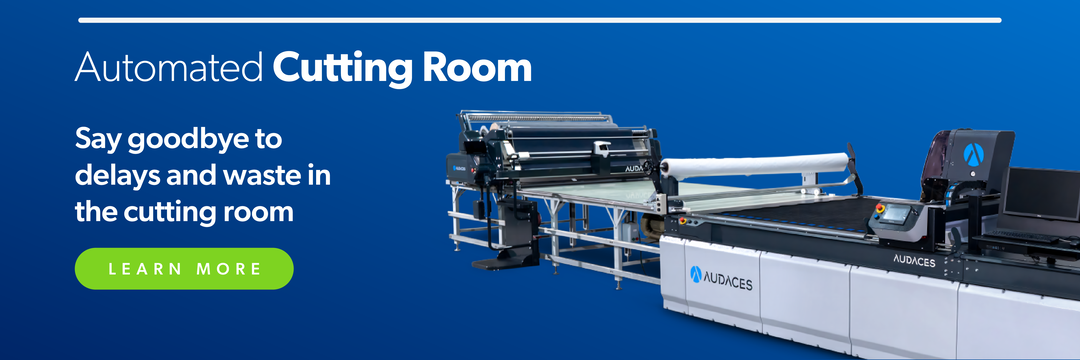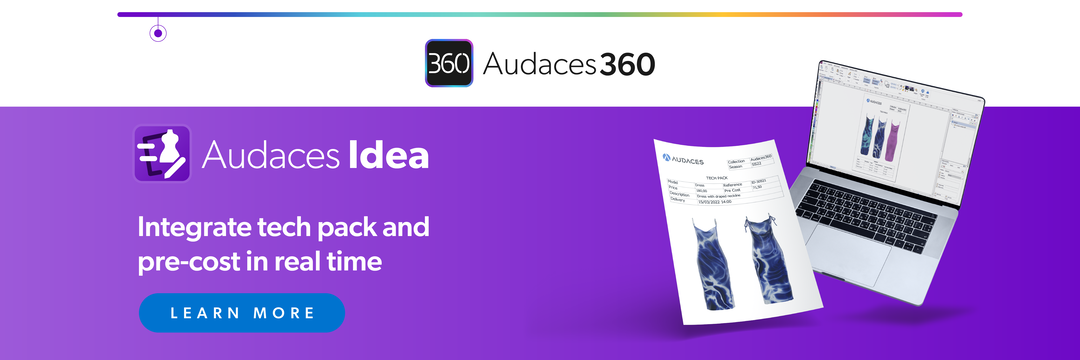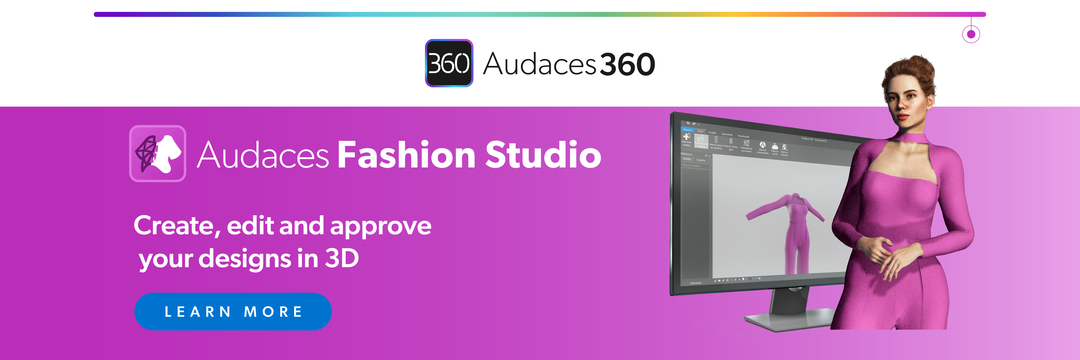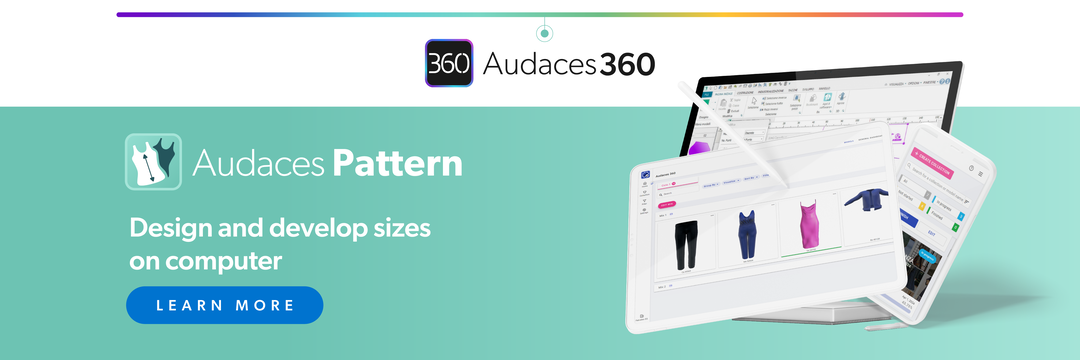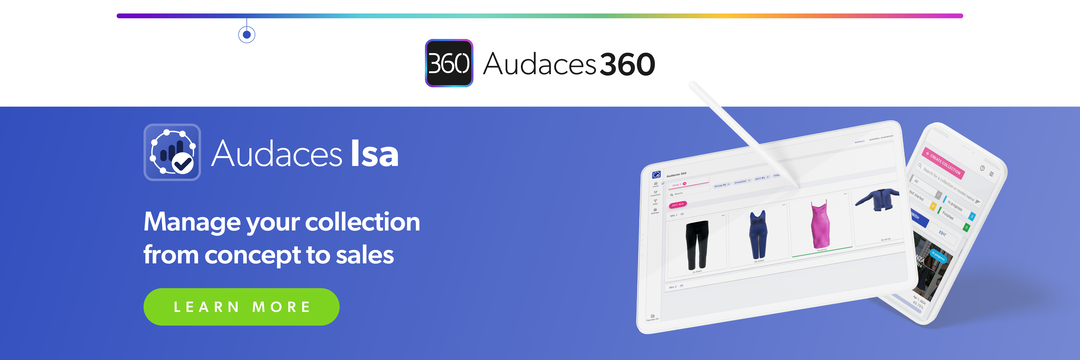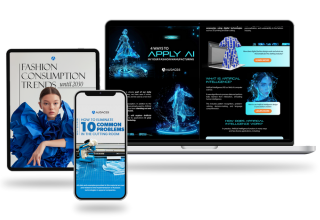Summary
- In fashion, a bag means far beyond a simple accessory: it’s a sign of quality and style.
- Designing it without the right tools can be a challenge, especially in a competitive market.
- Fresh fashion news, straight to your inbox. Subscribe to our newsletter!
Every successful bag starts with a concept. That concept might come from a need for utility, a pursuit of elegance, or a desire to try new ideas. No matter the source, designers must translate their vision into a functional, wearable piece.
That translation happens through careful design choices. They go from selecting the right silhouette to deciding on details like straps, closures, and compartments.
If you want to learn how to make a bag, this guide walks you through each step. You’ll discover how to move from initial sketches to a finished product with clarity at every stage.
Happy reading!
Sumário
What should you consider when designing a bag?
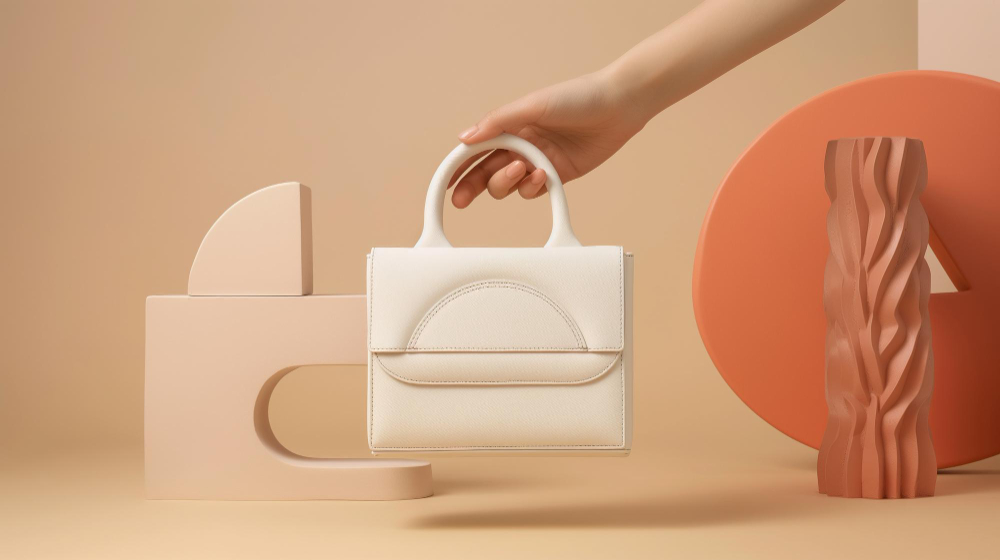
Function and purpose
Before anything else, every bag design should begin with a clear understanding of its intended function. Will people use it for everyday commuting, travel, events, or sports?
The purpose directly affects every design decision, from size and compartments to materials and structure. A travel backpack, for example, must prioritize durability, capacity, and organization. On the other hand, a clutch bag for an evening event focuses more on aesthetics and elegance.
When the purpose is well-defined, the designer can determine the necessary features to support that use. For instance, a work tote bag might include a padded laptop sleeve, pen holders, and zippered pockets.
These choices are not decorative, they’re functional responses to the user’s real-life needs.
Target audience
Understanding the target audience is essential to creating bags that resonate with users. Age, lifestyle, profession, and personal style all influence what people look for in a bag. Knowing your audience helps you design with empathy and relevance.
Demographic data offers a strong foundation, but digging deeper into values and habits reveals what truly matters.
Is sustainability important to your audience? Are they tech-savvy and likely to carry multiple devices? Do they value local craftsmanship or luxury materials? These insights influence not only the bag’s functionality but also the storytelling and branding that surrounds it.
Designers who deeply understand their audience can anticipate needs that customers didn’t even realize they had.
Material selection
Choosing the right materials is a creative and technical challenge. Materials define the look and feel of the bag, but they also impact weight, durability, flexibility, and cost.
Leather may offer timeless elegance and structure, while canvas lends a more casual, functional appeal. Synthetic materials, like recycled polyester, are gaining popularity for their sustainability and performance.
Beyond appearance, you must consider how materials behave under real-world conditions. A good-looking bag isn’t enough if it wears down quickly or becomes uncomfortable to use.
Hardware, lining, and zippers also play a role in material selection. They must match the quality and performance of the main fabric.
Learn more: What are the best leather cutting tools in the industry?
Ergonomics and comfort
A beautiful bag quickly loses its appeal if it’s uncomfortable to carry. That’s why ergonomics should be an integral part of the design process.
You need to think about how the bag will rest on the body and how the user will interact with it throughout the day. Small details, like padded straps or rounded handles, can make a huge difference in daily comfort.
The size and structure of the bag also affect usability. Oversized bags may strain the shoulder, while bags that are too small or rigid can feel awkward or impractical.
When learning how to make a bag, it’s important to consider how users will access and organize their items. Can they easily find what they need? Is the interior too deep, or are pockets poorly placed? Good ergonomics ensure the bag works with the body, not against it.
How to make a bag more efficiently?
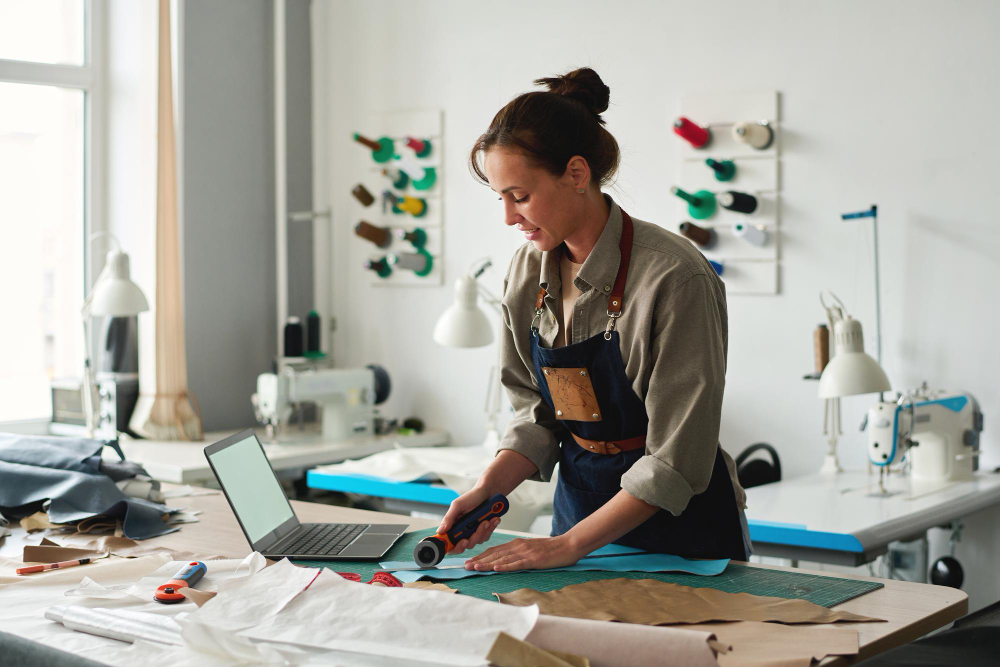
Streamline the creative process
Designing a bag efficiently starts with organizing the creative process. Instead of jumping straight into sketching, begin with mood boards, material research, and clear design objectives.
This strategic planning saves time in later stages. This is because it narrows down choices and guides the development toward a cohesive concept.
Time management also plays a key role. Setting clear deadlines for each phase of development, from ideation to prototyping, allows you to focus without sacrificing creativity.
Learn more: How to create a moodboard and organize your fashion inspirations?
Looking to see how technology can assist your creative process? Download our exclusive resource and learn how to apply Artificial Intelligence in fashion!
Use 3D design software
3D design software has transformed how to make a bag. Instead of relying solely on physical samples, you can build and visualize your bag in a digital environment. This allows for real-time adjustments in shape, size, stitching, and other key details.
Digital tools also give you a more accurate preview of the final product. You can apply textures, simulate lighting, and test color combinations before anything goes into production.
This significantly reduces back-and-forth with suppliers and shortens development cycles.
Simulate and test designs digitally
After creating a bag in 3D, the next step is visual validation. Digital simulation allows you to see how your design looks and behaves in a virtual space.
You can view the bag from every angle, zoom in on stitching or hardware, and understand proportions in real scale.
This type of simulation also makes it easier to spot design issues early. If something feels off in the balance, silhouette, or construction, you can adjust it immediately.
It’s like trying the product before making it, which gives you more creative confidence.
Learn more: Discover all about the intersection of fashion and virtual reality
Rely on Artificial Intelligence
Once your bag design is ready in 3D, Artificial Intelligence can take it a step further. By using AI-powered tools, you can generate hyper-realistic images that bring your digital prototype to life.
These images simulate textures, materials, lighting, and shadows with remarkable accuracy. Whether you’re designing leather, canvas, or metallic finishes, AI helps render the final look in a way that feels real to the eye.
It’s especially helpful for showcasing your designs to clients, marketing teams, or potential buyers.
Learn more: How to use Artificial Intelligence design in your fashion creation
6 bag designers who achieved global success
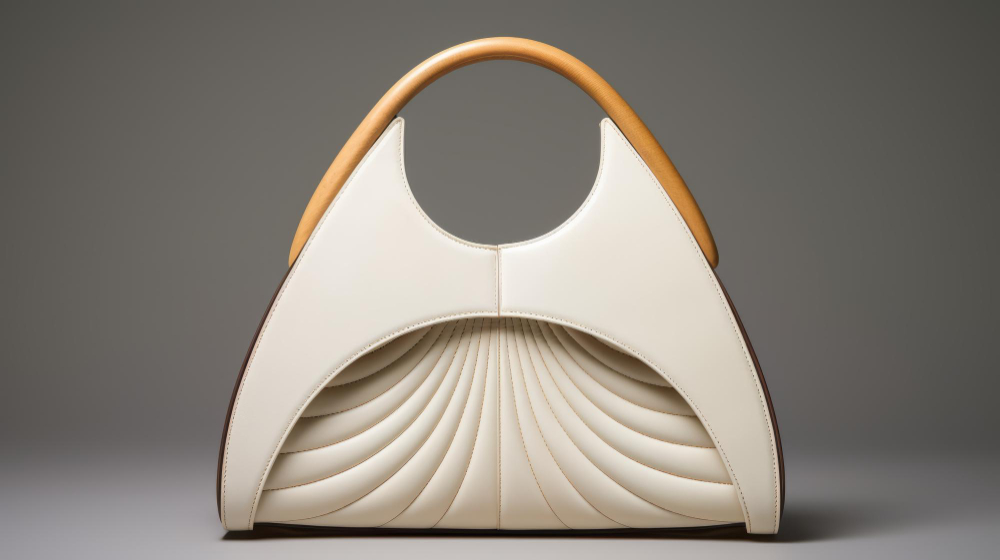
1) Coco Chanel
The designer transformed women’s fashion by combining elegance with practicality. In 1955, she introduced the iconic Chanel 2.55 bag, named after its launch date, February 1955.
With its quilted leather, gold chain strap, and flap closure, the 2.55 offered freedom of movement and a timeless sense of style. It wasn’t just a bag; it became a symbol of luxury and independence.
The Chanel bag remains one of the most recognizable fashion items in the world. You still can see its influence in modern handbag design, and new variations continue to dominate fashion collections.
2) Miuccia Prada
Miuccia Prada turned her family’s traditional leather goods company into a symbol of modern luxury. In 1985, she designed a simple black nylon backpack that disrupted the status quo.
Lightweight, minimalist, and practical, it redefined what a designer bag could be and instantly gained cult status.
3) Kate Spade
This American designer launched her brand in the early 1990s with a line of colorful and boxy handbags. The collections are equal parts playful and practical.
Her aesthetic stood out in a market dominated by traditional luxury and quickly resonated with young, professional women.
Accessible price point and vibrant designs made Kate Spade bags a staple of 90s fashion. The brand grew into a global lifestyle label, showing that success in bag design doesn’t require heritage.
Learn more: 9 success stories of American fashion designers worldwide
4) Telfar Clemens
Telfar Clemens challenged traditional luxury fashion with a clear mission: “Not for you, for everyone.” His unisex Telfar Shopping Bag became a viral hit for its sleek look, affordable price, and inclusive message.
By blending style, social relevance, and community-driven marketing, Clemens showed how bags can represent values and identity.
5) Louis Vuitton
Louis Vuitton began as a trunk-maker in 19th-century France, but his monogrammed bags became synonymous with luxury travel.
The brand’s leather goods, especially the Speedy and Neverfull, are now global status symbols. They blend heritage craftsmanship with practical design.
6) Jonathan Anderson
As creative director of Loewe and founder of JW Anderson, Jonathan Anderson brought a artistic edge to bag design.
His Puzzle Bag, launched under Loewe, quickly became a best-seller thanks to its geometric shape and modern structure.
Learn more: 5 reasons why fashion houses should innovate with quality
Can I succeed in designing bags?
Yes, you absolutely can! If you’re learning how to make a bag, know that success in bag design doesn’t rely on following a specific formula. It comes from creating something that resonates with people.
With today’s tools, you don’t need a large team or expensive samples to start. Digital design software, AI rendering, and virtual sampling allow you to create and showcase your ideas faster than ever.
You can launch a brand, pitch to buyers, or grow your presence online from your own studio.
What truly sets successful designers apart is persistence, originality, and the courage to explore. If you keep refining your craft and stay open to learning, your designs can earn recognition.
Speed up your bag design process with Audaces technology
Audaces is a market leader fashion technology company and a reference worldwide. Through a deep understanding of fashion creation and production, we have developed ideal solutions for each stage.
Audaces Fashion Studio
Audaces Fashion Studio is a groundbreaking innovation for fashion designers within Audaces360 multisolution.
This innovative technology empowers professionals to create smarter sketches on a 3D mannequin. It provides tools and functionalities to enhance your design process.
Explore fabrics, colors, textures, and apply prints in a few clicks!
Audaces Sofia
Meet Audaces Sofia our cutting-edge fashion Artificial Intelligence. It helps you enhance your creations with an unlimited source of inspiration.
This solution has the power to transform concepts into reality in a matter of minutes. Some simple prompts are all you need to generate print variations and realistic images.
Audaces Sofia integrates with Audaces Fashion Studio, providing you with the complete solution to create effortlessly.
Discover Audaces360 and unlock a world of possibilities for fashion design and production. Explore our comprehensive suite of solutions today!
FAQ
Function and purpose, target audience, material selection, and ergonomics and comfort.
Streamline the creative process, use 3D design software, simulate and test designs digitally, and rely on Artificial Intelligence.
Coco Chanel, Miuccia Prada, Kate Spade, Telfar Clemens, Louis Vuitton, and Jonathan Anderson.


